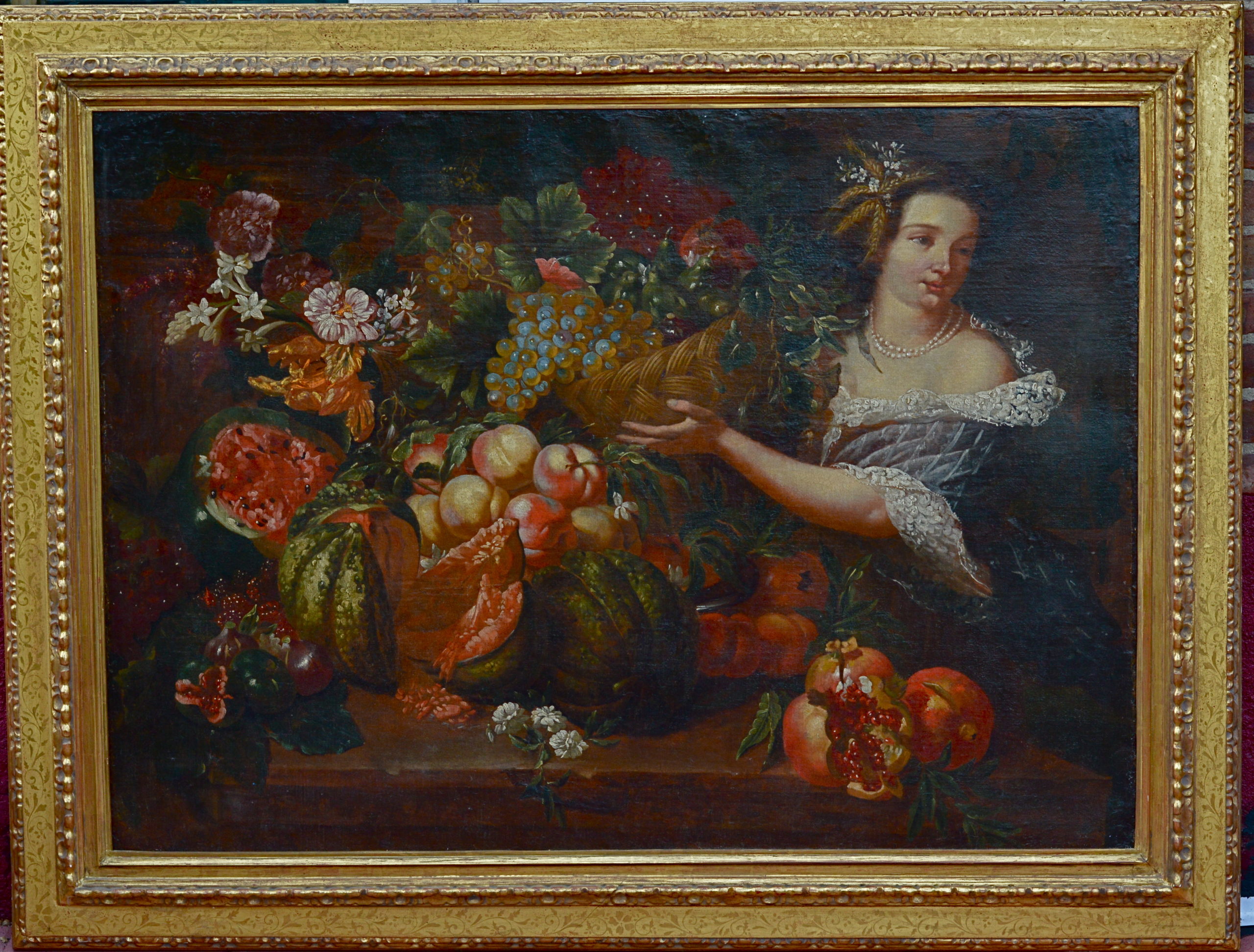Previously unknown, sequestered in a private Westchester hoard, this impressive painting provides a singular addition to the few large table top still lives with figures painted largely ca. 1630 by the young Louyse (Louise) Moillon. Famous in her time as the outstanding still life painter of her generation, her paintings were acquired by the French aristocracy, Parisian elite, and Charles I of England. Mostly quiet straightforward groups of seasonal fruit on a bare tabletop, these were natural progenitors of Chardin’s still lives in the next century.
The present painting might be placed sometime shortly after 1629, the date on a comparatively still and bare fruit arrangement with a female figure (cat. 3) – presumably a market vendor in the mode of earlier Antwerp market still lives. The somewhat pallid unmodulated flesh tones in this early painting suggest an emerging and gifted but still learning tyro; in two following paintings in similar format done about a year or two later (cat. 4 & 5). The women in these paintings, while sharing the same general facial structure as the 1629 work, are now modeled with greater command of the half shadows molding cheeks and hands, while the gathered fruit and few parerga flowers are denser as better unified by cohesive shadowed areas. By 1640, a more complicated composition of a woman with a valet shows a full mastery of modeling, although the structure of the face – the arched brow, fine nose and cleft chin – remains a constant throughout as also seen in the present painting in which there is a greater plastic division between the light and darker sides of the face placing it closer to the 1640 painting than the somewhat stiff and flat earlier essays in figure painting.
Yet here again, as with the best of all still life imagery, honest simplicity might contain an inner theme in the metaphor of seasonal fruit, its condition between raw, ripe and rotting, and even as in the present painting the continuation of still life elements in the woman’s costume: the wheat sheaves in her coiffure are not casual accidents but the possible emblems of an allegorical personification which, judging by the nature of the ample harvest on the table would represent autumn in a set of the Four Seasons. This sense of theme is amplified by the woman’s glance outward from the painting towards an audience far to the right of the canvas. Could there be three more paintings to complete this set and would the focal gaze of this figure hint at the placement of the quartet visa vis a bespoke creation?

